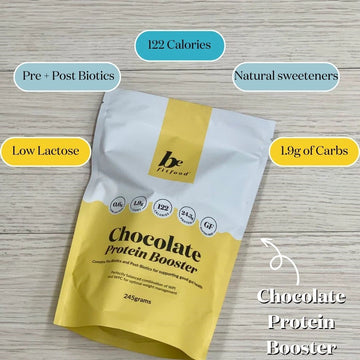In recent years, an extensive range of protein powders have permeated the health and fitness market, but the vast amount of choice can be overwhelming when deciding which powder is the most suitable.
At the core of any protein powder is the type of protein, which can vary from traditional bovine protein (whey or casein), to soy, pea, hemp, or egg protein. (1) Extracting protein from cow’s milk occurs via the separation of liquid whey from the coagulated solid component, casein. (2) Inherent differences in the digestion and absorption rates of whey and casein result in their categorization as “fast” and “slow” acting protein, respectively. (3) Nutritionally, whey contains all 9 essential amino acids and a higher content of branched chain amino acids (BCAA), which are recognized for their role in stimulating anabolic pathways. (4) The BCAA leucine is recognized for its pivotal role in maximizing muscle protein synthesis which is something to consider when evaluating the amino acid profile of a product. (5)
Choosing a protein powder with a higher whey isolate to whey concentrate ratio further enhances protein quality, as the isolate form is naturally higher in protein and lower in carbohydrates and fat due to additional processing. (6) Isolate also contains less lactose which encourages digestive comfort as this sugar is often poorly tolerated by many individuals. (6)
Agents that often appear in protein powder including flavour additives, bulking agents, and sweeteners may enhance their sensory appeal but also contribute extra calories, sugar content, and increase glycaemic load. (7) This is something to consider when selecting a protein powder, look at the nutrition information panel for filler ingredients such as maltodextrin and skim milk powder, and artificial sweeteners like acesulfame K or sucralose (which may also present as sweetener (950) or (955)). (7) Fillers like maltodextrin are added to increase volume, but once ingested becomes rapidly released into the blood which can cause blood sugar to spike, triggering the release insulin which can promote fat storage. (8)
Conversely, clean protein powders will naturally contain fewer ingredients. This may simply include the protein source, natural flavours or sweeteners, and emulsifying or thickening agents. Products that resemble this will encourage healthy weight loss and muscle growth.
At Be Fit Food, we have created the “protein booster” protein powder which is made from less than 10 clean ingredients. Protein boost contains a high whey protein isolate to concentrate ratio to deliver a high-level quality of protein. It is also low in lactose, sugar and carbs and provides gut friendly pre- and post-biotics. The formula is designed to promote digestive comfort and maximize muscle protein synthesis, without compromising taste.
Here are the top 10 reasons why our Be Fit Food Protein Booster is one of the best in Australia;
- Unique blend of WPI and WPC which is well absorbed and gradually released
- No added sugar or artificial sweeteners
- Natural flavours
- Low Lactose
- Gluten Free
- Low Carb (1.9g per serve)
- Contains Pre-biotics for gut health
- Contains Pro-biotics for gut health
- Does not cause bloating due to low lactose WPI/WPC blend with Pre and Pre-biotics
- Over 24g protein per serve
Serving suggestion –
The Be Fit Food Protein Booster can be mixed with water for convenience on-the-go, however we recommend using the Protein Booster in combination with low-carb greens and berries to create a delicious smoothie which is full of whole-food goodness. See our range of healthy smoothie recipes at www.befitfood.com.au or download our Be Fit Food Protein Booster Recipe E-book.
References:
1) The best types of protein powder explained - sports illustrated [Internet]. 2023 [cited 2023 Aug 24]. Available from: https://www.si.com/showcase/nutrition/types-of-protein-powder
2) Huffman LM, James Harper W. Maximizing the value of milk through Separation Technologies. Journal of Dairy Science. 1999;82(10):2238–44. doi:10.3168/jds.s0022-0302(99)75471-8
3) Kanda A, Nakayama K, Sanbongi C, Nagata M, Ikegami S, Itoh H. Effects of whey, caseinate, or milk protein ingestion on muscle protein synthesis after exercise. Nutrients. 2016;8(6):339. doi:10.3390/nu8060339
4) Wolfe RR. Branched-chain amino acids and muscle protein synthesis in humans: Myth or reality? Journal of the International Society of Sports Nutrition. 2017;14(1). doi:10.1186/s12970-017-0184-9
5) Plotkin DL, Delcastillo K, Van Every DW, Tipton KD, Aragon AA, Schoenfeld BJ. Isolated leucine and branched-chain amino acid supplementation for enhancing muscular strength and hypertrophy: A narrative review. International Journal of Sport Nutrition and Exercise Metabolism. 2021;31(3):292–301. doi:10.1123/ijsnem.2020-0356
6) Whey Protein Concentrate vs Whey Isolate: How are they different and which one is right for you? [Internet]. Sports Illustrated ; 2023 [cited 2023 Aug 24]. Available from: https://www.si.com/showcase/nutrition/whey-protein-vs-isolate
7) Cutter T. 10 ingredients that should never be in your protein powder [Internet]. [cited 2023 Aug 24]. Available from: https://thehealthychef.com/blogs/wellbeing/10-ingredients-that-should-never-be-in-your-protein-powder
8) Is maltodextrin bad for me? [Internet]. Healthline Media; 2022 [cited 2023 Aug 24]. Available from: https://www.healthline.com/health/food-nutrition/is-maltodextrin-bad-for-me





